There is increasing interest in maintaining a healthy lawn using environmentally friendly practices. Top environmental concerns among homeowners include keeping pesticides out of the environment, maintaining biodiversity, and improving water quality.* Traditional lawn care practices typically rely on synthetic fertilizers and pesticides. Excess nutrients and chemicals in these products may run off your lawn into nearby storm drains and pollute local waterways. So what can you do? Let’s ‘dig in’ to the basics!
Follow these steps for a healthy lawn that minimizes polluted runoff and take pride in the fact that you are making a positive impact on water quality in your watershed.

Set your mower deck to ensure that your cut grass is no shorter than three to four inches. | Photo Credit: Janice Milanovich, Illinois-Indiana Sea Grant
Mow high to shade out weeds and promote deep, healthy roots. Maintain a grass height of three to four inches. Use a sharp mower blade for a clean cut that protects against disease and requires less energy. Remove no more than ⅓ of the leaf blade at a time.
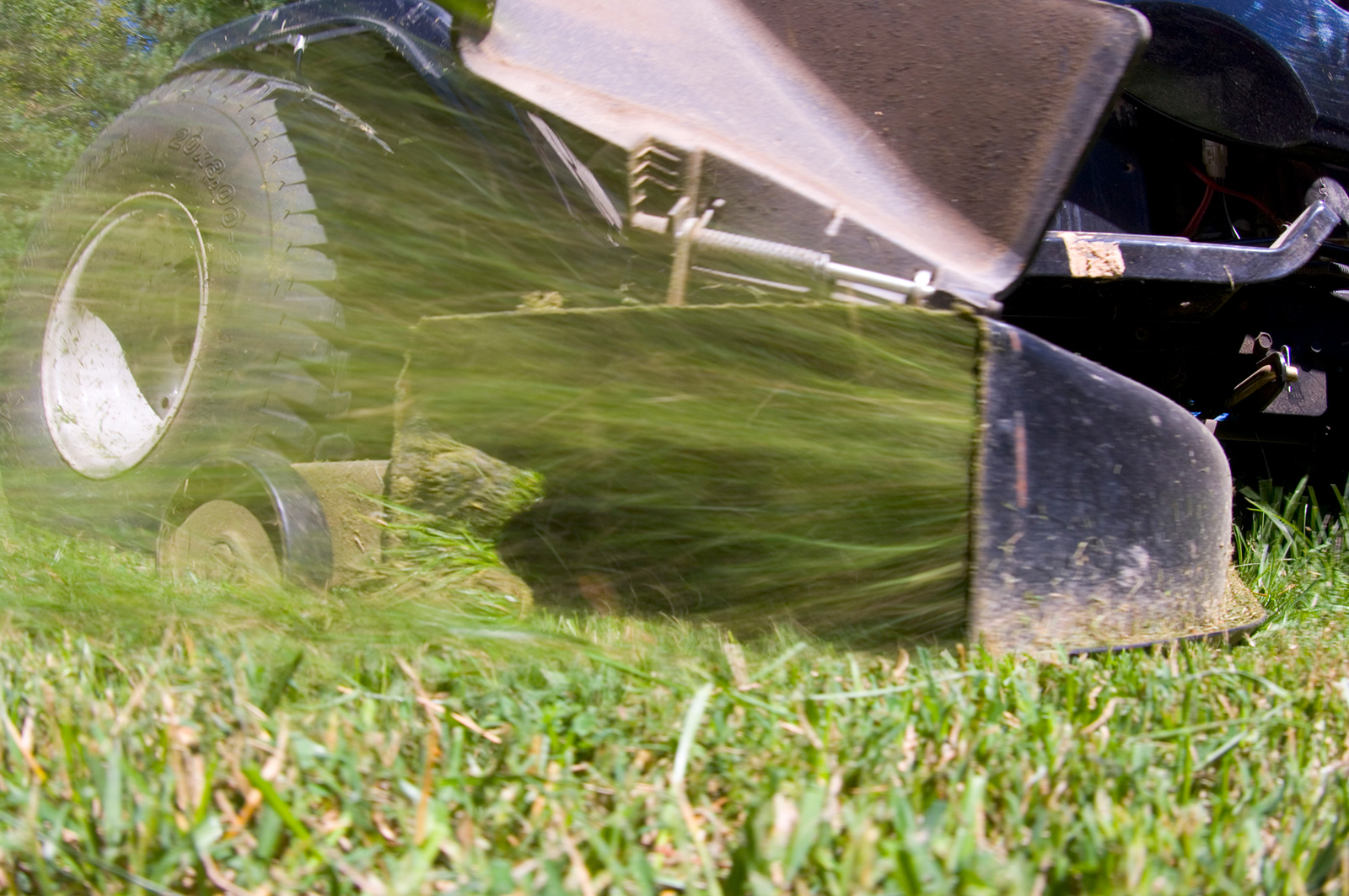
Mulching instead of bagging your clippings saves time and adds nutrients back to the lawn. | Photo credit: Shutterstock
Leave grass clippings to return nutrients to the soil and reduce fertilizer needs by up to 25%. Always sweep clippings off hard surfaces and back onto your lawn.
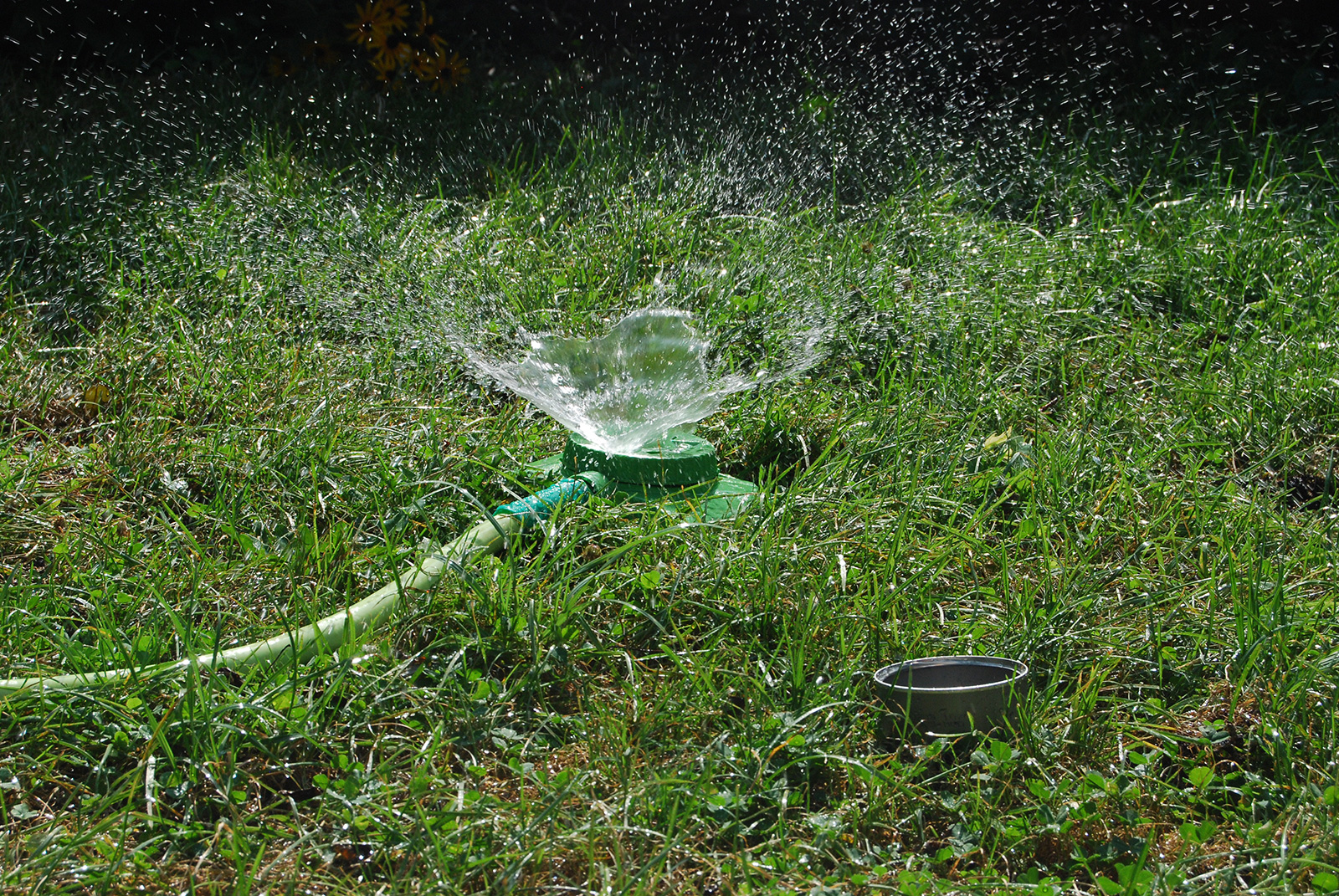
An empty tuna can is useful for measuring how much water you add to your lawn. | Photo credit: Janice Milanovich, Illinois-Indiana Sea Grant
Water efficiently by monitoring rainfall and only adding what is needed to total 1 inch per week. When watering, do so deeply and infrequently—allowing water to soak in and encouraging deep roots. Water in the morning to reduce evaporation. Avoid wasting water on hard surfaces like sidewalks and driveways.
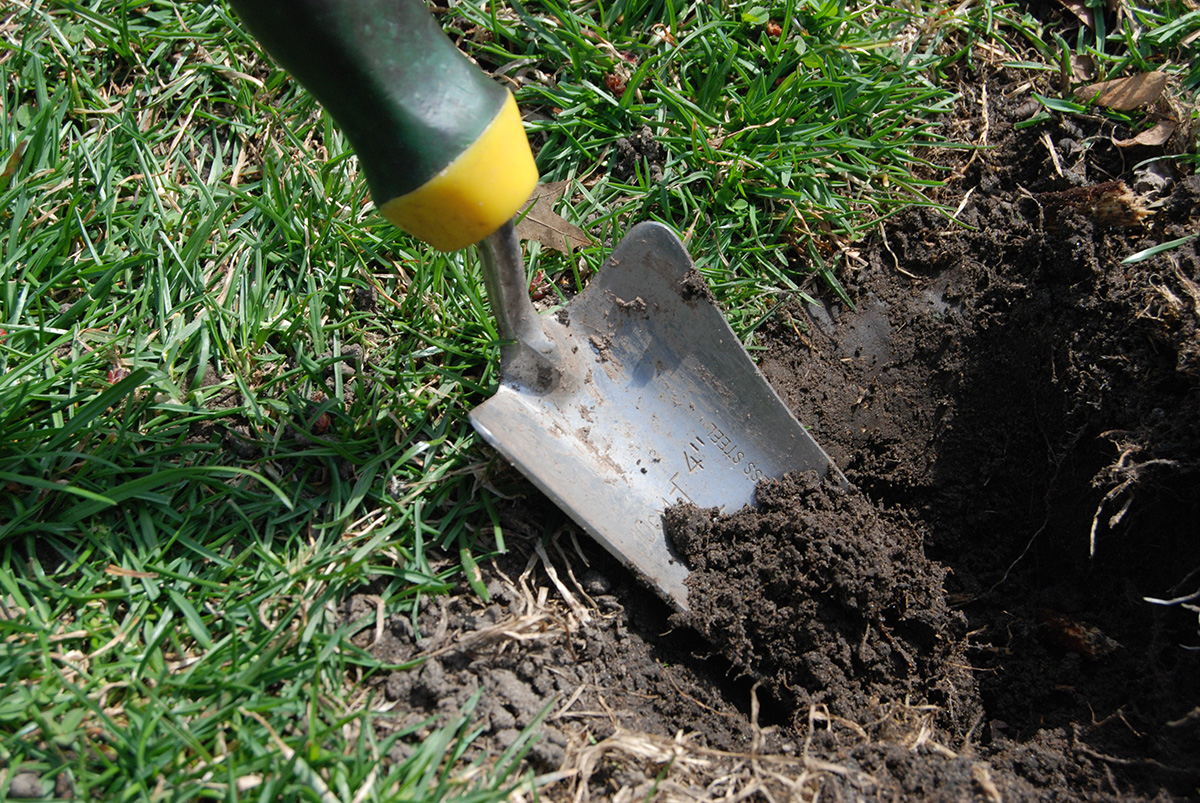
Testing your soil is the best way to ensure it is healthy. | Photo Credit: Janice Milanovich, Illinois-Indiana Sea Grant
Test your soil to see what nutrients are available and what amendments may be needed.
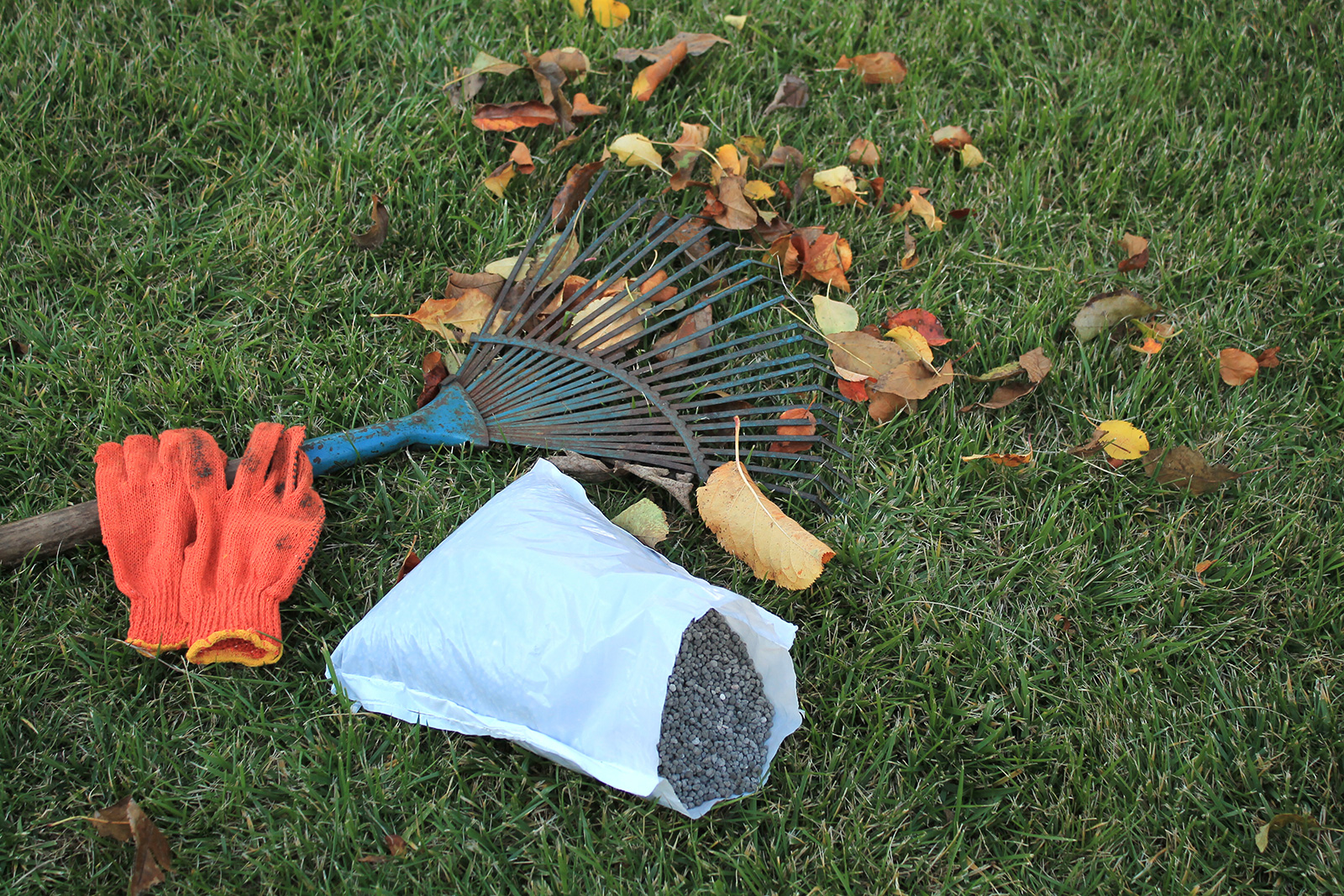
The best time of year to fertilize in the upper Midwest is in the fall. | Photo Credit: Shutterstock
Fertilize in the fall for cool-season grasses if nutrient inputs are needed. Use zero-phosphorus fertilizers, unless recommended by a soil test. Look for slow-release (water-insoluble nitrogen) fertilizers and avoid “weed and feed” products. Always sweep excess fertilizer off hard surfaces and back onto your lawn.
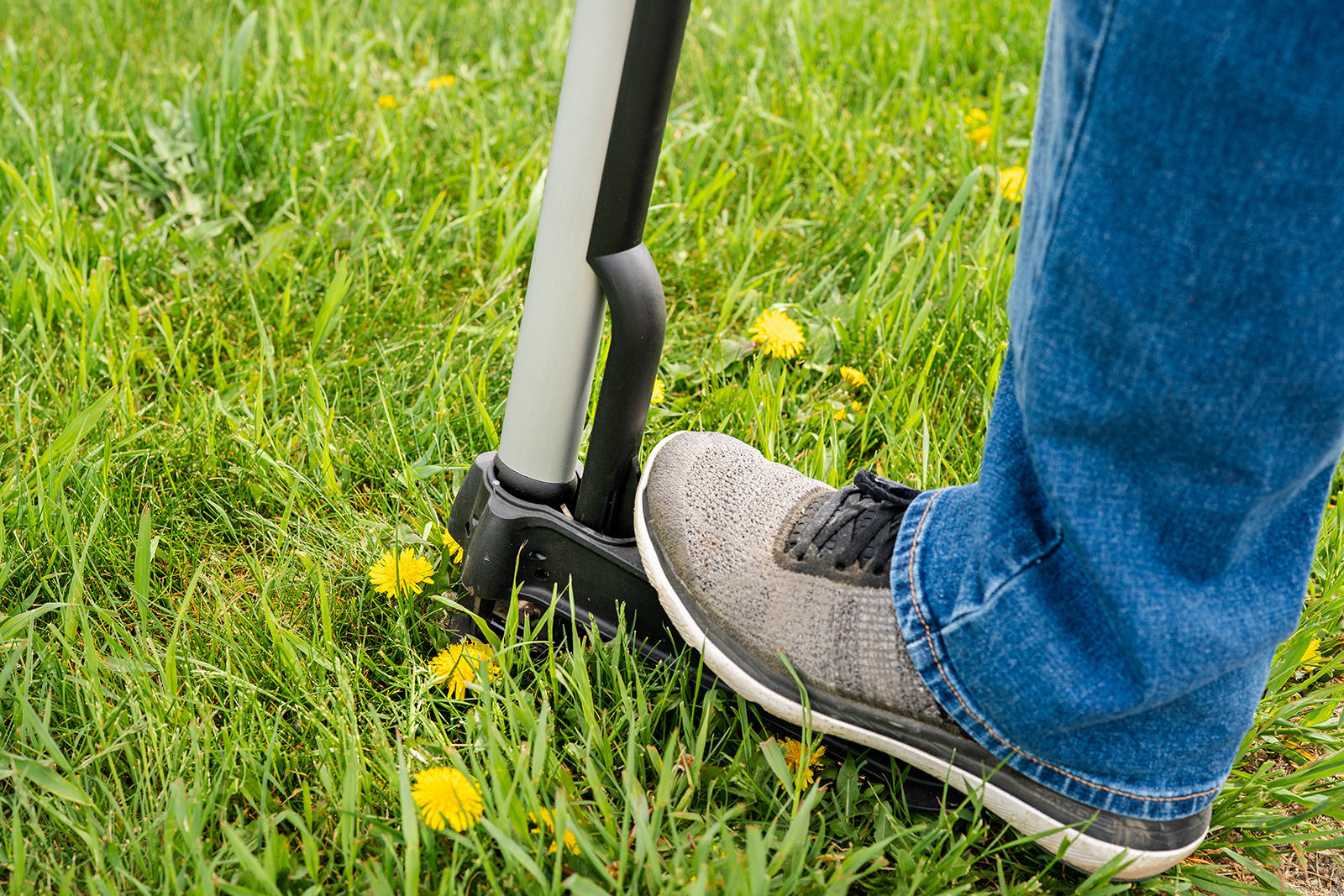
Hand-removing weeds like dandelions can be efficiently done with simple tools. | Photo Credit: Adobe Stock
Use fewer lawn chemicals by practicing Integrated Pest Management. If weed or pest problems arise, hand pick weeds or correctly identify the problem and spot-treat with the least-toxic, recommended product.
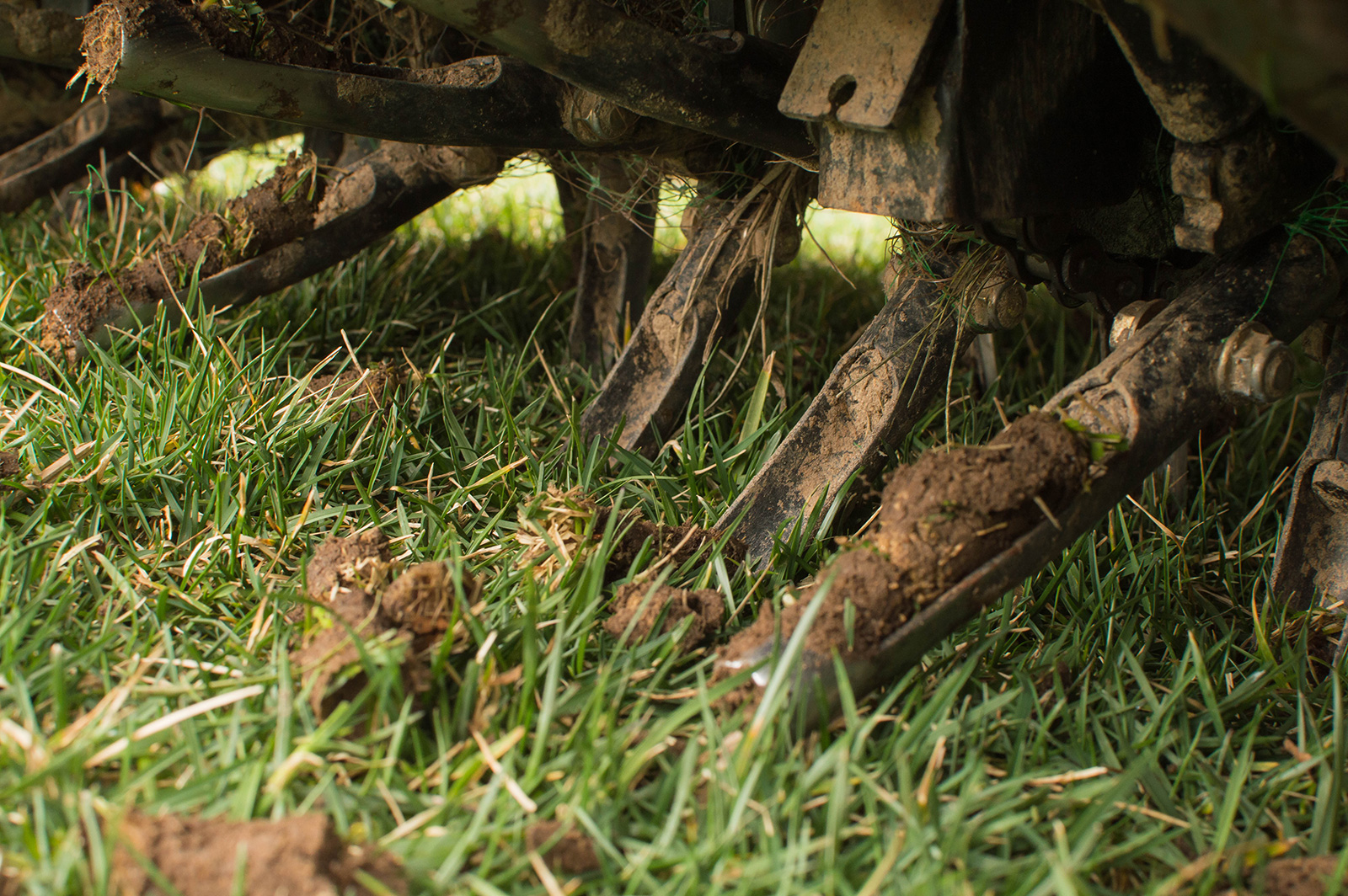
Core aerators are machines that remove plugs of soil to decrease soil compaction. | Photo Credit: Shutterstock
Core aerate to reduce compaction, control thatch, and increase water absorption; overseed with the right turfgrass species for your lawn’s growing conditions; and topdress to increase soil organic matter. These actions will improve soil structure and keep your lawn thick.
Taking these steps will help you create a healthy stand of turfgrass that can naturally combat drought, disease, weeds, and pests. Above all, a healthy lawn acts like a sponge—absorbing water, trapping pollutants, and ultimately preventing stormwater pollution.
The Basics of Natural Lawn Care
Want to learn more?
Already doing the basic steps listed above? Get In the Weeds to discover more about each Lawn to Lake Principle or explore our Natural Lawn Care Calendar for a seasonal guide.
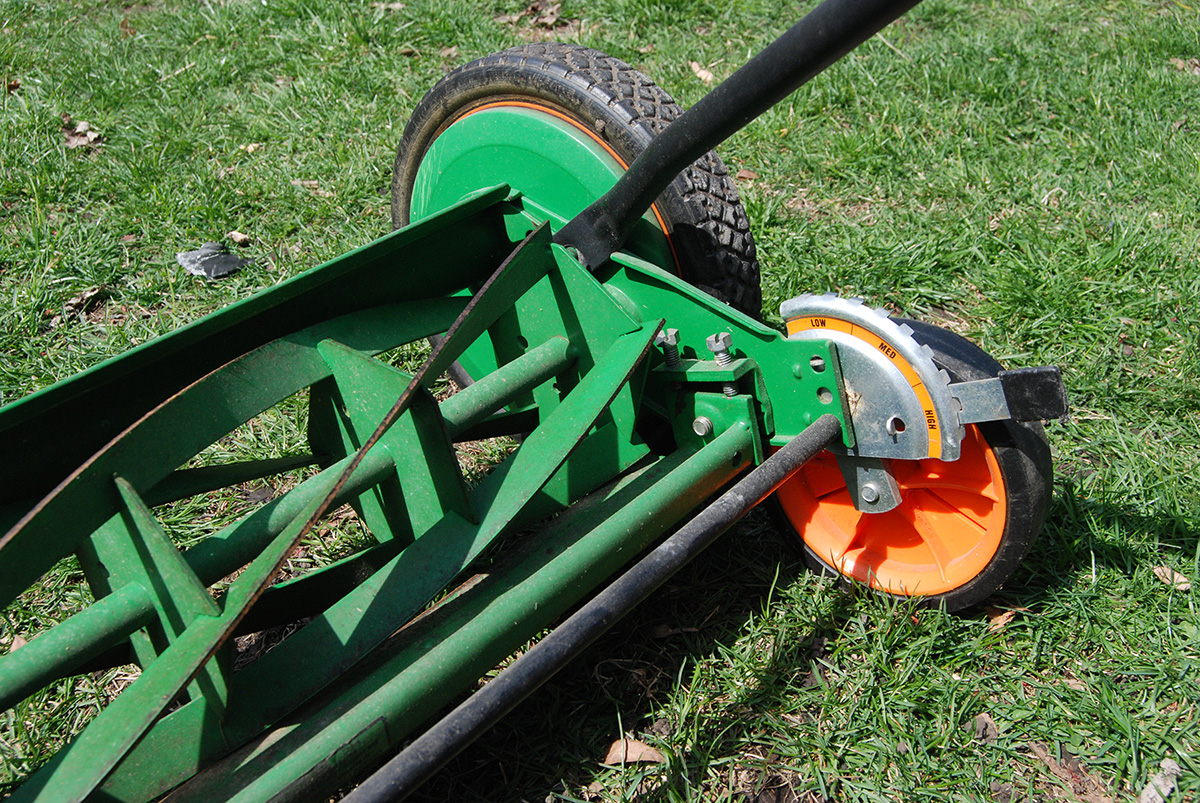
Manual lawnmowers, like this push reel mower, can efficiently mow without cords, gas, or battery power. | Photo credit: Janice Milanovich, Illinois-Indiana Sea Grant












